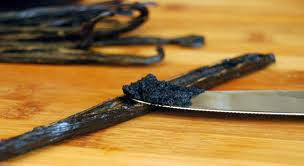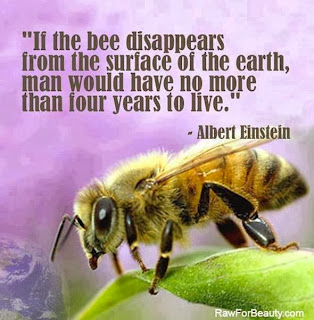 Today it occurred to me that, NEVER, in the last 20 years of working
in the “luxury” cosmetic industry, have any of the 1000’s of women I have
worked with ever told me that she “loves her skin and thinks it is beautiful
just the way it is.” NEVER! The conversation is always about what is
wrong with her skin, how it doesn’t look good enough, feel smooth enough, tight
enough, lifted enough, radiant enough, young enough, etc. These customers have then poked, pulled,
stretched, lifted, and even tucked their skin, to physically show me how their
skin has failed.
Today it occurred to me that, NEVER, in the last 20 years of working
in the “luxury” cosmetic industry, have any of the 1000’s of women I have
worked with ever told me that she “loves her skin and thinks it is beautiful
just the way it is.” NEVER! The conversation is always about what is
wrong with her skin, how it doesn’t look good enough, feel smooth enough, tight
enough, lifted enough, radiant enough, young enough, etc. These customers have then poked, pulled,
stretched, lifted, and even tucked their skin, to physically show me how their
skin has failed.
Well ladies, truth be told…it is not our Skin that has failed,
it is our collective understanding of what Skin IS, what Skin DOES, and
what Skin NEEDS. Albert Einstein said
“Look deep into nature and you will understand everything better.” Well, that is what we are going to do.
Your Skin
IS Your Immune System
Did you know that your Skin is actually a huge part of your
Immune System? Your Skin’s job is to
protect your body from disease and prevent water loss. It was never supposed to “look pretty.” Your
Skin is alive and constantly hunts down any harmful Pathogen (chemical,
particle, bacteria, microbe, or unidentifiable substance) and attempts to destroy
it.
it.
Your Skin is the ONLY physical barrier between your internal
organs and the environment – your Skin takes the first hit in any battle and is
your first line of defense against any infection and disease causing pathogen. If any disease causing invader is able to
penetrate the Skin, your Skin then secretes Anti-Microbial Peptides to fight
it. If the Barrier and Anti-Microbial defenses
don’t do the trick, your Skin then employs its own Special Forces (think Navy
Seals) to literally engulf and metabolize the pathogens before they can reach
the blood stream and travel throughout the body.
Another amazing fact is that your Skin supports its own
ecosystem of over 1 trillion micro-organisms from over 1000 species of bacteria
(known as Skin Flora) that live on the skin at any given moment! And, no matter how much washing, cleansing,
or clari-sonic-ing you do they will still be there! What is even more remarkable is that your
Skin must correctly determine when there is a pathogen among those 1 trillion
little guys and dispose of it properly so it cannot harm you internally.
Cell-Care
vs. Skin-Care
Skin is alive and is made up of millions of Cells. Therefore, Cells must be the focus of
Skin-Care. Cells are the very building
blocks of all human life. It is the
health of the Cells that is truly important for healthy, well-functioning Skin,
yet we rarely talk about what our cells need.
Cells are basically a microscopic energy factory that holds multiple
different mini-energy factories. Each
Cell has its own function and nutritional needs and each mini-factory has its
own function and needs as well.
If Cells are healthy and strong, they are more likely to
prevent disease, if they are weak and permeable, they are less likely to
prevent disease. For Cells to be healthy
and fight disease, they need Vitamins A, C, D, & E, Lipids, Proteins,
Water, and other botanical elements found in Nature. “Beautiful” Skin must be thought of as all
Cells are healthy, functioning on all-cylinders, and winning the battle against
pathogens with the least amount of energy.
As a Human, it is your job to make sure that all of those factories get
the resources they need to do their jobs.
Changing
Our Mindsets
Let’s be honest…have you previously considered your Skin as
part of your Immune System, as your first line of defense against disease, or
considered the health of your Cells when buying your Skin-“Care” products? Probably not, and it’s not your fault. We have not been taught to care for our Skin
as part of our overall health and well-being. We have been trained to purchase
products that reduce pore size, minimize fine lines and wrinkles; tone,
tighten, lift, and firm our “aging” Skin.
We are taunted by the idea of reversing “aging” and become “more”
beautiful. Our Skin is categorized into
“Types” – Aging, Oily, Normal, Combination, Dry, etc. and then we buy the prescribed
products. When these product options don’t satisfy us,
we seek out more aggressive and invasive options. This selling strategy is the main reason why
we are not happy with our Skin.
Mainstream
Skin-“Care” is Doing More Harm Than Good
 Your Skin is alive.
You are alive. Imagine you are
given the choice to eat a Peach or a Bouncy ball. You know that you can digest the peach and it
will benefit your health, whereas the bouncy ball would be toxic. This is the same situation with a Skin Cell
and the choice between Peach Kernel Oil or Petrolatum. The Skin Cell knows how to metabolize the
Peach Kernel Oil and benefit from it, whereas Petrolatum is a foreign,
non-biological, toxic intruder. Now,
Petrolatum may seem benign enough, but what about Ammonium
Acryloyldimethyltaurate/VP Copolymer?
What is a Skin Cell supposed to do with THAT? Constantly fighting these types of chemicals
exhausts Cell resources and provides nothing of benefit for it to convert into
energy.
Your Skin is alive.
You are alive. Imagine you are
given the choice to eat a Peach or a Bouncy ball. You know that you can digest the peach and it
will benefit your health, whereas the bouncy ball would be toxic. This is the same situation with a Skin Cell
and the choice between Peach Kernel Oil or Petrolatum. The Skin Cell knows how to metabolize the
Peach Kernel Oil and benefit from it, whereas Petrolatum is a foreign,
non-biological, toxic intruder. Now,
Petrolatum may seem benign enough, but what about Ammonium
Acryloyldimethyltaurate/VP Copolymer?
What is a Skin Cell supposed to do with THAT? Constantly fighting these types of chemicals
exhausts Cell resources and provides nothing of benefit for it to convert into
energy.
Why I
detest the idea of a Skin-“Type”
There once was a time, in the not so distant past, when the
concept of a “skin-type” didn’t exist.
The concept was created by a marketing team to sell more products. It is true that skin functions differently
for different people (due mainly to overall Cell health), but that has nothing
to do with Skin-“type.” Consider that Skin
is an Organ just like the Heart, Liver, Pancreas, etc. and we don’t go to the
Doctor and talk about Heart-type, or Liver-type, or Pancreas-type!
It’s Time
to Flip the Script
When choosing products to put on our Skin, instead of saying
“my skin is oily, what can I buy to stop the oil?” We must think, “My Skin is
telling me it needs more oil, maybe I need to supply additional lipids to fight
an invasion!” Or, instead of saying “my skin looks old.” We must think “My Skin
may be overworked and burning out? I may need to supply it with a power boost
of anti-oxidants that can aid in the fight against invasion!” This type of
thinking is what will lead us to better overall health and “beauty.”




